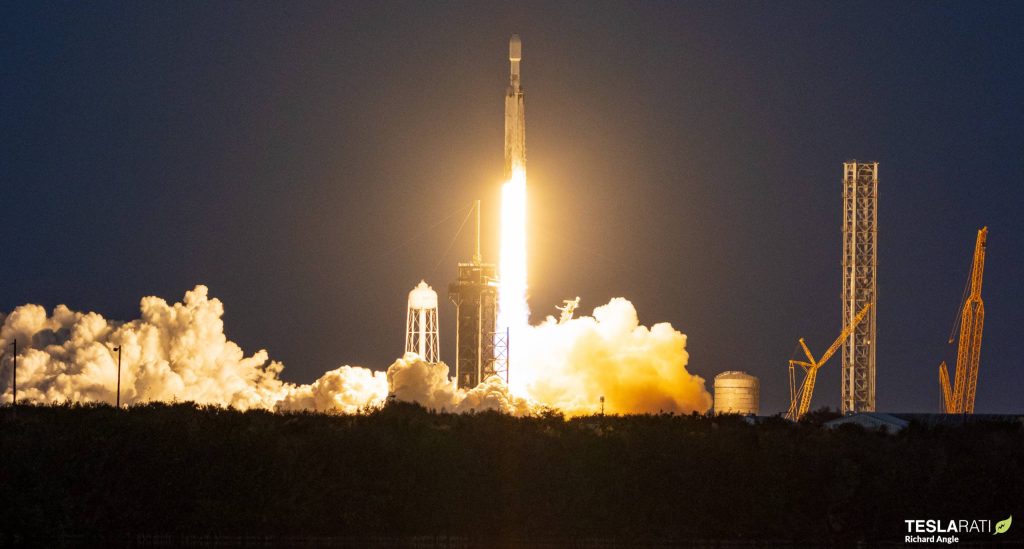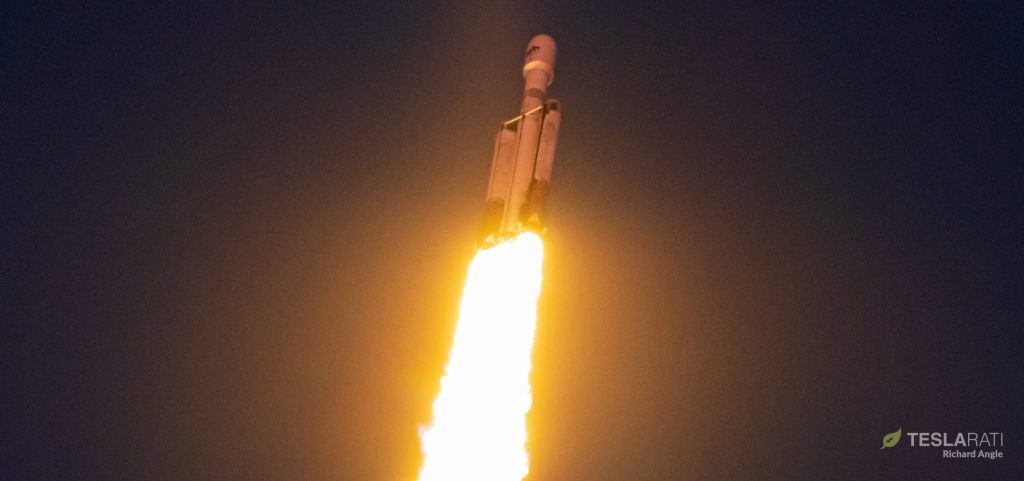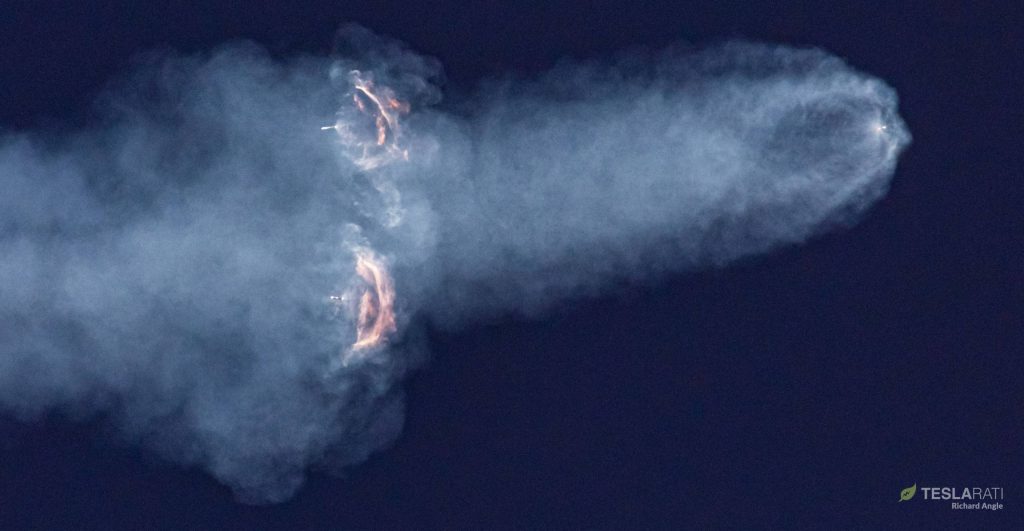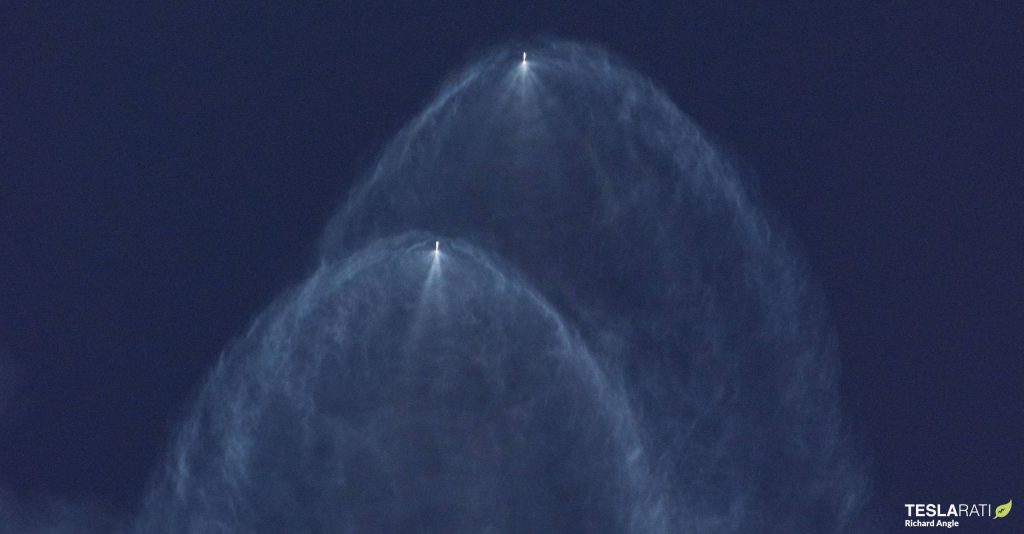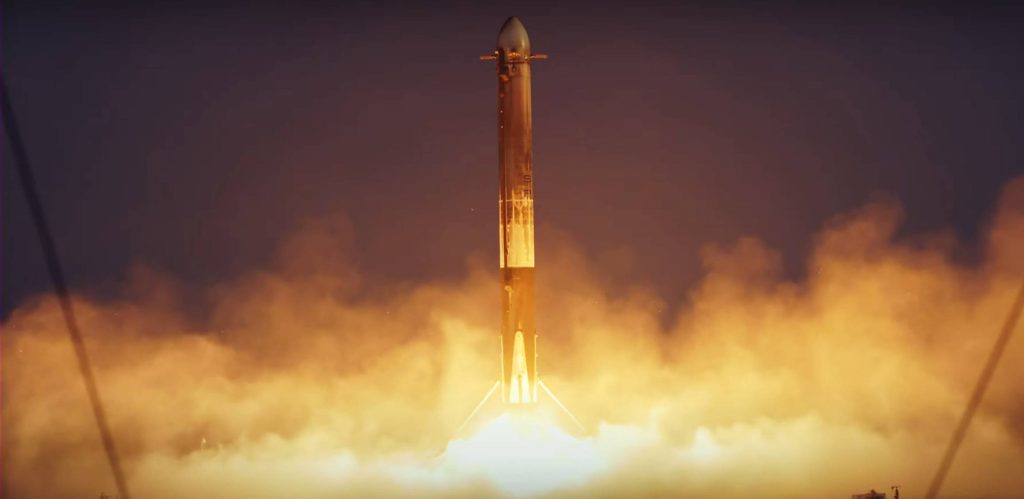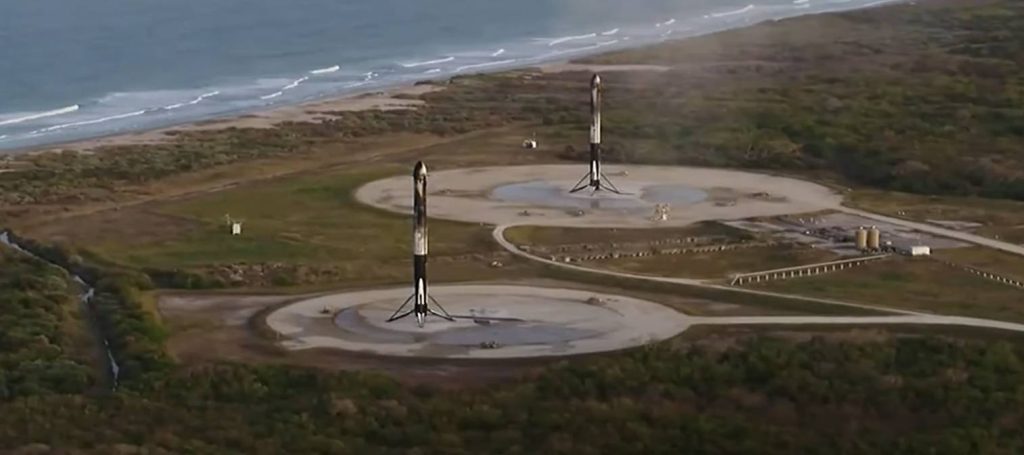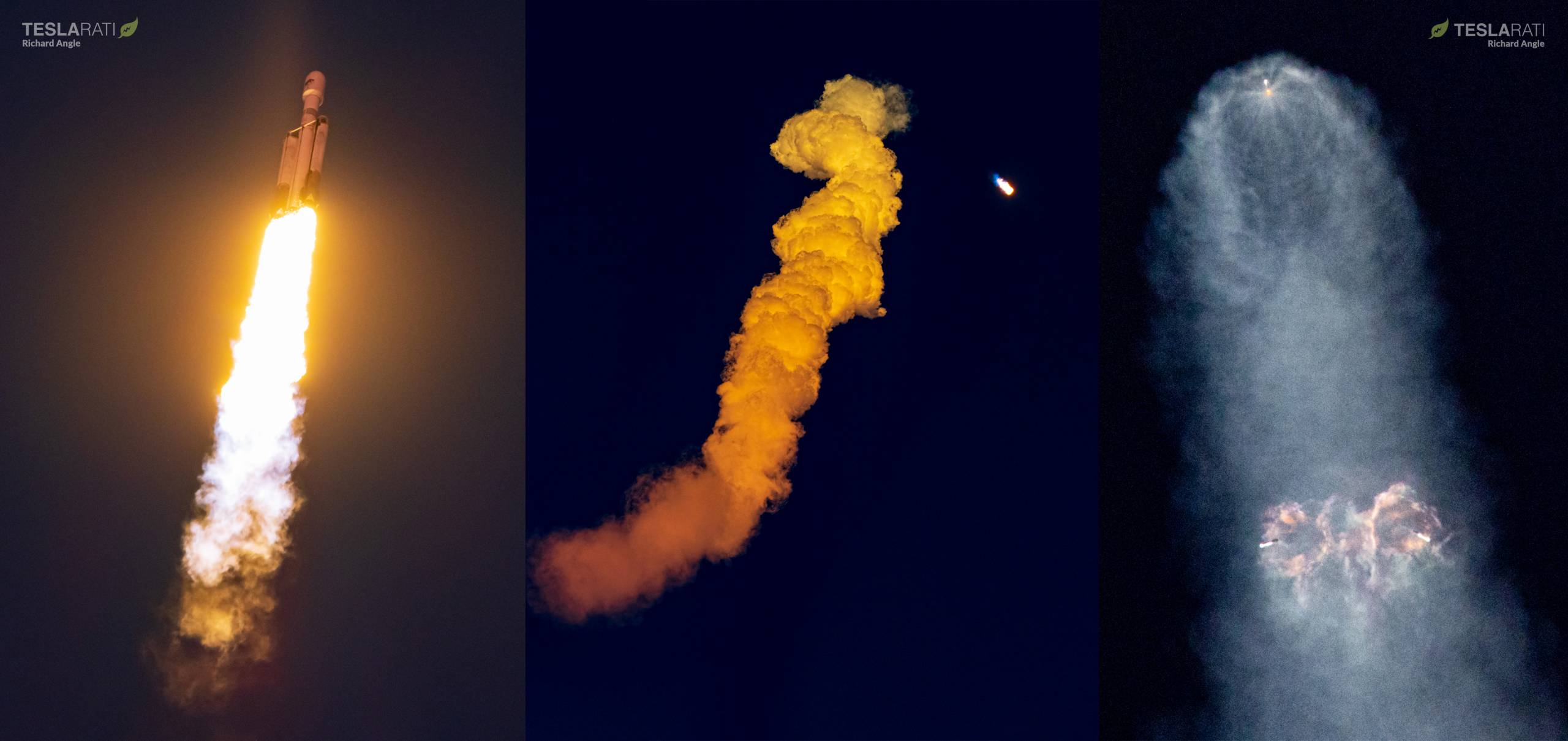SpaceX’s fifth Falcon Heavy lifted off shortly after sunset on the US Space Force’s USSF-67 mission, producing one of the massive commercial rocket’s most spectacular launches yet.
Powered by three Falcon 9-derived boosters, each with nine Merlin 1D engines, Falcon Heavy fired up and soared off of SpaceX’s Kennedy Space Center LC-39A pad at the start of its Sunday launch window. Producing up to 2326 tons (5.13 million lbf) of thrust shortly after liftoff, Falcon Heavy upheld its position as the world’s most powerful commercial rocket and the second most powerful operational rocket.
USSF-67 largely mirrored SpaceX’s November 1st, 2022 USSF-44 Falcon Heavy launch, and even used the same side boosters. Flying for the second time in 75 days, B1064 and B1065 aced their roles in the mission and separated from Falcon Heavy’s expendable center booster (or core) around three minutes after liftoff. The side boosters immediately flipped around with thrusters powered by compressed nitrogen gas and ignited three of their nine Merlin 1D engines to boost back to the Florida coast. After coasting back to Florida, they completed brief reentry burns to lessen atmospheric heating and fired up one last time to gently touch down at SpaceX’s LZ-1 and LZ-2 landing pads.
Another mysterious military mission
Because Falcon Heavy lifted off after sunset, local skies were dark and the rocket quickly climbed back into daylight, creating spectacular contrast between twilight and the bright rocket exhaust. When Falcon Heavy’s side boosters flipped around and reignited, their high-velocity exhaust plumes slammed into the center core’s opposing plume, producing spectacular interactions and a nebula-like cloud that caught even more of the daylight. Had Falcon Heavy lifted off just a handful of minutes later, a darker sky could have made for an even more incredible ‘nebula’ or ‘jellyfish’, but the rocket’s first twilight launch was still spectacular.
After both side boosters touched down, SpaceX ended its live coverage at the request of the Space Force, reiterating the mission’s secretive customer and nature. Compared to USSF-44, the USSF hasn’t confirmed much about the USSF-67 mission’s payloads, but Falcon Heavy is known to be carrying a geostationary communications relay satellite called CBAS-2 and likely built by Boeing.
CBAS-2 is joined by Northrop Grumman’s third Long Duration Propulsive EELV or LDPE-3A, a combination of a propulsive kick stage and a satellite. LDPE-3A is carrying a collection of rideshare satellites and payloads and is designed to operate for months in orbit. Using USSF-44 as a guide, the total USSF-67 payload could weigh roughly 3.75 to 4.75 tons (8,250-10,500 lb).
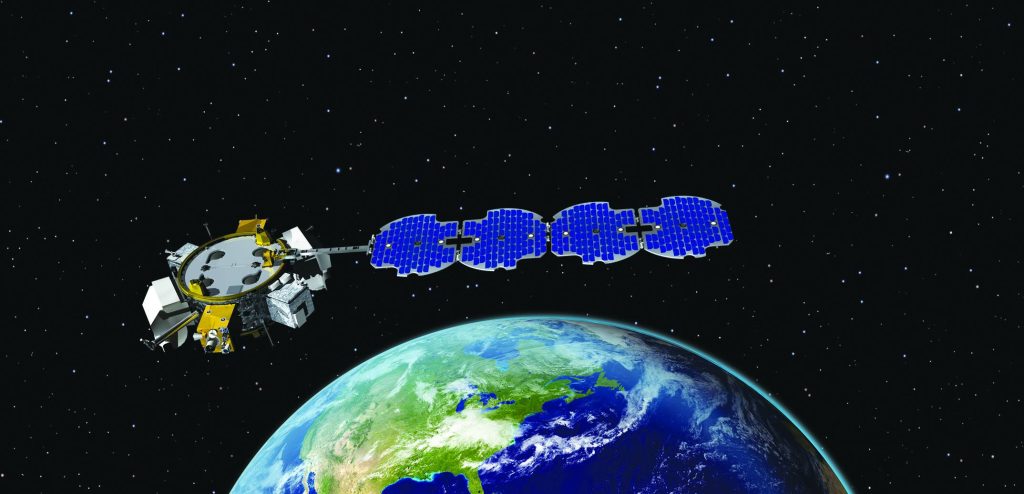
Climbing to GSO
While small compared to ordinary payloads, Falcon Heavy is launching USSF-67 directly to a geosynchronous orbit. Direct-to-GEO/GSO launches are exceptionally challenging for the rocket. Falcon Heavy must first sacrifice one of its three boosters just to ensure the Falcon upper stage is traveling fast enough and has enough propellant to spare when it separates. The upper stage must then conduct at least three or four burns.
The first burn likely carried the upper stage and USSF-67 payload into a parking orbit around 300 kilometers (~185 mi) above Earth’s surface. A second burn of the upper stage’s Merlin Vacuum engine will lift the pair into a geosynchronous transfer orbit (GTO) with the low end still around 300 kilometers but the high end around 35,800 kilometers (~22,250 mi). Finally, the upper stage must survive a roughly five-hour coast to that apogee. During that coast, the rocket must survive passes through both of Earth’s harsh radiation belts and maintain perfect control of its orientation and tank pressures to keep its refined kerosene fuel from freezing, its cryogenic liquid oxygen (LOx) from boiling away, and itself from bursting as its propellant warms and expands.
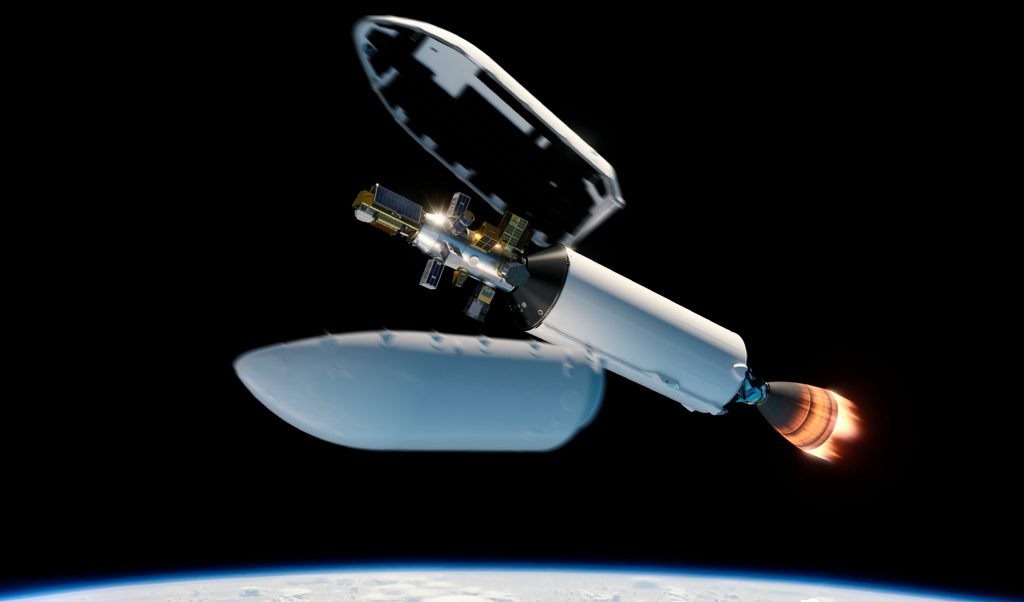
If it does all of those things right, the upper stage will be able to complete a circularization burn at apogee and deploy its CBAS-2 and LPDE-3A payloads directly into geosynchronous orbit (~35,786 x ~35,786 km). At GSO, satellites orbit at the same speed as Earth spins, allowing them to indefinitely hover over the same region of the planet, making it useful for Earth observation, surveillance, and communications. Finally, the Falcon upper stage will attempt to complete one last burn to send itself into a graveyard orbit just above GSO, where it will eventually run out of power and lose control.
It will take around 6-8 hours after liftoff before SpaceX or the USSF can confirm if the mission was a success. Rewatch SpaceX’s fifth Falcon Heavy launch and dual booster landing here.
